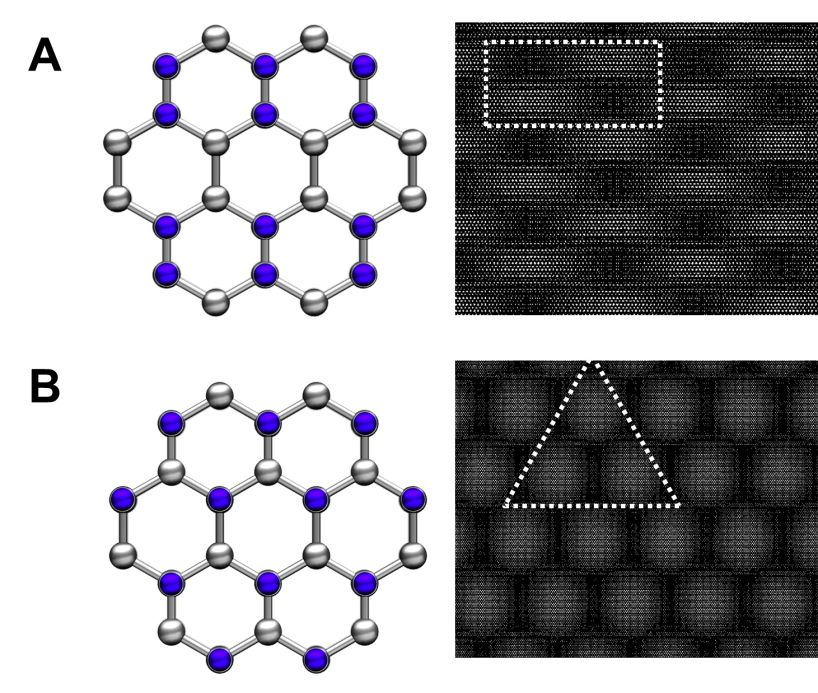Fabrication of new-generation of Moiré superlattice on bilayer graphene by electron beam induced fluorination
- Abstract number
- 1155
- Event
- European Microscopy Congress 2020
- DOI
- 10.22443/rms.emc2020.1155
- Corresponding Email
- [email protected]
- Session
- PSA.1 - 1D & 2D Materials
- Authors
- Dr. Hu Li (1), Tianbo Duan (1), Dr. Soumyajyoti Haldar (2), Prof. Biplab Sanyal (2), Prof. Olle Eriksson (2), Prof. Hassan Jafri (1), Dr. Laurent Simon (3), Prof. Klaus Leifer (1)
- Affiliations
-
1. Department of Materials Science and Engineering, Applied Materials Science, Ångstrom Laboratory, Uppsala University, 75121 Uppsala, Sweden
2. Department of Physics and Astronomy, Materials Theory, Ångstrom Laboratory, Uppsala University, 75121 Uppsala, Sweden
3. Institut de Sciences des Materiaux de Mulhouse, CNRS-UMR 7361, Universit e de Haute Alsace, 68093 Mulhouse, France
- Keywords
graphene, electron beam deposition, moiré pattern, atomic force microscopy
- Abstract text
The emerging of Moiré superlattices in graphene based heterstructures have paved the way to the observation of a variety of phenomena in condensed matter physics [1][2][3]. To fabricate such structure, two nearly identical crystals are overlaid with small twisted angle which is mainly achieved by dry transfer method [4]. Alternatively, graphene derivatives with different functional groups such as OH and F synthesized having a different lattice constants as compared to pristine graphene could be used [5]. By transferring such functionalized graphene to pristine graphene, a bilayer graphene system would be formed containing a Moiré pattern. However, the conventional dry transfer technique is inapplicable for the rippled surface of such graphene derivatives since it is difficult for match such surface to the atomically flat surface of pristine graphene. In addition, the contamination layer between the two layers from ambient environment is unavoidable which results in a low yield in the fabrication of such structures [4]. Therefore, a new approach is necessary to overcome these problems for the fabrication of bilayer graphene Moiré superlattices.
Herein, we report a technique to fabricate a new generation of Moiré superlattices using C2F/graphene bilayers obtained by the technique of beam induced fluorination [6]. Bilayer graphene exfoliated from highly oriented pyrolytic graphite (HOPG) with typical Bernal stacking is irradiated by electron beam while being exposed by XeF2 gas (Fig. 1). The fluorination concentration is tunable by optimizing electron beam irradiation condition and the rectangular Moiré patterns can be observed by atomic force microscope after a saturated fluorine concentration. Such rectangular Moiré superlattices have not been reported before. Furthermore, the symmetry of the Moiré superlattices indicates that the CF2 structure of topmost layer is the boat configuration which is illustrated in Fig. 3.
In conclusion, we demonstrate that a new generation of CF2/graphene Moiré superlattices can be fabricated by electron beam induced fluorination in an SEM. This new approach not only promises the controllable concentration of graphene fluorination, but also paves the way for the high-efficiency, contamination-free fabrication of bilayer graphene Moiré superlattice.
Fig.1. Schematic figure of the fluorination process using electron beam
Fig.2. a) Scanning tunneling microscopy image of the HOPG (b) AFM image of the single-sided fluorinated bilayer graphene which shows the appearance of moiré patterns (c) AFM image of the single-sided fluorinated bilayer graphene and the dot rectangle denotes the unit cell of moiré patterns. The inserted is the structure of the C2F boat.
Fig.3. The schematic figures of the topmost graphene layer structure and corresponding simulated moiré patterns with bottom pristine graphene layer. (A) C2F boat configuration. (B) C2F chair configuration.
- References
[1]B. Hunt, J. D. Sanchez-Yamagishi, A. F. Young, et al., Science 340, 1427 (2013).
[2] R. K. Kumar, X. Chen, G. H. Auton, et al., Science 357, 181 (2017).
[3] Cao, Y., Fatemi, V., Fang, S. et al. Nature 556, 43–50 (2018).
[4] Haigh, S., Gholinia, A., Jalil, R. et al. Cross-sectional imaging of individual layers and buried interfaces of graphene-based heterostructures and superlattices. Nature Mater 11, 764–767 (2012)
[5] Li, H., Daukiya, L., Haldar, S. et al. Sci Rep 6, 19719 (2016)
[6] Li, H., Duan, T., Haldar, S., et al. Applied Physics Reviews, 7(1), 011403.



